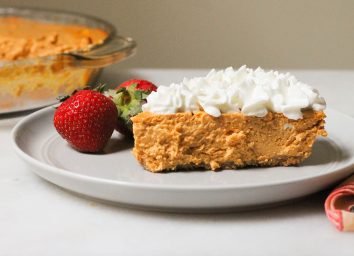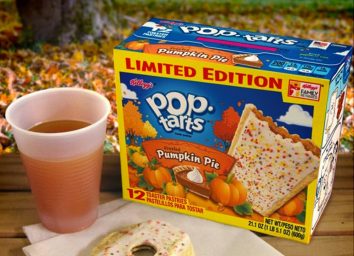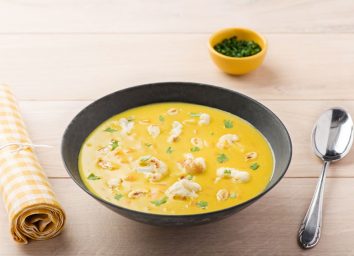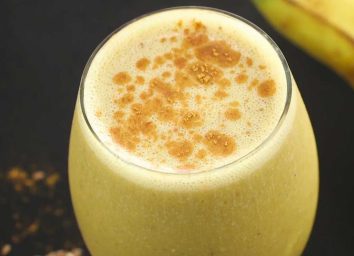Everything You Need to Know About Pumpkin, Fall's Superfood Fruit
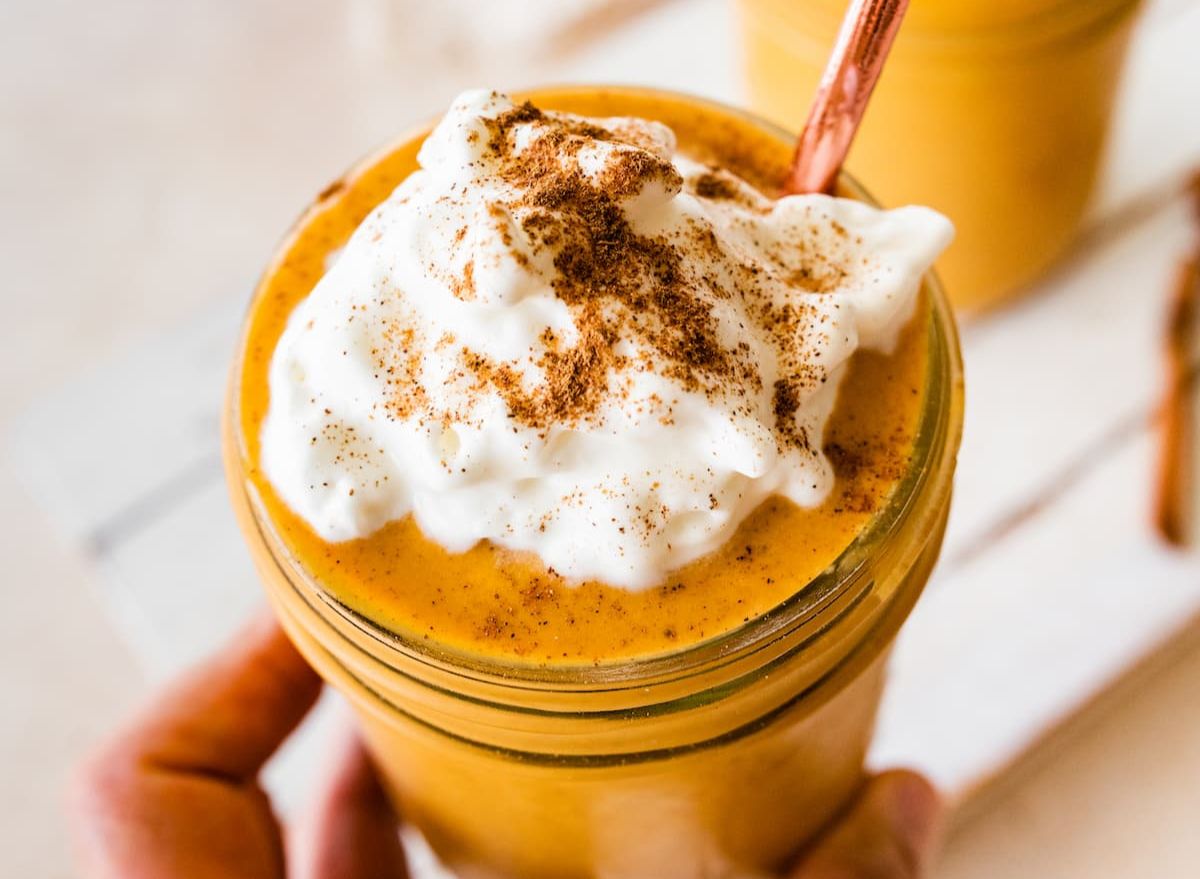
In the past few years, pumpkin-spice everything has transformed this fruit from the thing of Jack-O-Lanterns to a year-round delight. And yes, you read that right: Pumpkin is a fruit. Although we tend to think of the squash as a vegetable, it's officially a fruit of the vine.
Vegetables are simply defined as the roots, stems, or leaves, while fruits are the product of the plant with seeds. In a pumpkin, the flesh and all the seeds are super nutritious. Here's a rundown on what pumpkin really is and why it's a great superfood to add to your diet.
What is a pumpkin?
Pumpkin is a fruit of three varieties of squash: Cucurbita pepo, Cucurbita argyrosperma, and Cucurbita moschata. It's recognizable thanks to its hard rind carved with grooves. Pumpkin varieties can be yellow, orange, white, or even green, red, blue, or mixes of color.
In the United States, we use pumpkins on Thanksgiving to make our traditional pumpkin pies, and we carve the hard rind into a Jack-O-Lantern for Halloween. In other countries, people eat pumpkin as a vegetable, just like many other squashes. Typically, cooks prefer the pie pumpkin, which is a smaller, sweeter variety than the bigger pumpkins used on Halloween.
Pumpkins grow on a vine, attached to woody stems. Because some varieties grow to huge proportions, there are contests and state fairs and farmer's markets across the country to see who can grow the biggest pumpkin. Last year, a farmer from New Hampshire grew a record-breaking pumpkin that weighed 2,528 pounds. While that is now the largest pumpkin to be recorded in the U.S., it isn't the biggest pumpkin ever. That record belongs to a Belgian resident, whose pumpkin weighed 2,624 pounds.
When is pumpkin in season?
Pumpkins get planted in the warm season, but take a little time to grow on the vine. Typically, they are harvested in the fall, making them an autumn vegetable.
If you're choosing one at a pumpkin patch or your local supermarket, there are a couple of things to look out for, too. Most of the varieties are orange, so you can look for a deep pinkish to orange color to ensure that the pumpkin is ripe. And make sure to pick a pumpkin with a good stem. The ones without stems won't keep as well.
What does it taste like?
The first pumpkin pie was just a pumpkin with the top cut off and seeds removed, filled with spices, milk, and honey and baked by the colonists in a fire. They seemed to like the sweet concoction, and a tradition was born. But what about the squash's savory side?
When roasted, pumpkin has a sweet flavor. It is mild, adapting to the particular recipe used. It doesn't taste like a sweet potato, but more like squash with extra sweetness. Pumpkin is a great ingredient for dishes like hot pot and even chili because it won't overpower the other flavors of the meal. It's good for way more than pie and pumpkin spice lattes!
What are the health benefits of pumpkin?
Alene Baronian, MS, RDN, CSSD, recommends pumpkin to her clients at Eat 2 Perform, Inc. in Los Altos, California, where she specializes in sports nutrition and weight management. She says pumpkin has a number of health benefits.
"It's a great source of vitamin A, which is high in antioxidants that can help with inflammation in the body," Baronian says. "Also a good source of fiber that will benefit digestive health."
Vitamin A helps with vision, boosts immunity, and works to regulate reproduction. It's also fat-soluble, which means that it dissolves in fat and can be stored by the body for future use. Baronian suggests adding roasted pumpkin in a salad with a protein and some fiber to make a balanced, complete meal.
Because pumpkin contains a good portion of Vitamin C, it's a good vegetable to eat for bone health, healthy skin, and blood vessels. It also assists your body in healing properly after a wound.
Pumpkin also contains vitamin E, which boosts the immune system to protect against disease. These vitamins are all antioxidants, which can get rid of free radicals that pollutants can expose people to.
What's the nutrition breakdown of pumpkin?
Pumpkin is a low-fat food. With one cup of cubed, raw pumpkin, there is less than a gram of fat, along with 1.16 grams of protein. It's low in carbs, too, with less than eight grams per cubed cup.
And though it seems sweet, there are only three grams of sugar per serving of raw pumpkin. In addition to being a good source of vitamin A, the squash contains 24 mg of calcium, almost 1 mg of iron, and 394 mg of potassium per cup.
What are some creative ways to use pumpkin?
Ever since the colonists created pumpkin pie, the fruit has been used creatively in the kitchen. It's delicious in baked goods like spiced pumpkin cookies, iced bars, or bread; made into curried pumpkin soup; or simply tossed with olive oil and roasted. Pumpkin is also a great addition to chili and is delicious in pasta.
Pumpkin's delicious flavor became a national obsession and a huge success for Starbucks. Invented by Stanford graduate and then Starbucks product manager Peter Dukes, the pumpkin spice latte is one of Starbucks' most famous drinks.
Chef Vince Freyne has the unique job of molding the palates of students at the Benedictine Military School, using his skills as a former executive chef. He appreciates pumpkin for its versatility.
"I think it's safe to assume for most that when we hear the word pumpkin, we immediately conjure up 'sweet' in our minds," Freyne says. "I have prepared pumpkin from A to Z at Benedictine, from a creamy fall harvest bisque, pumpkin fritters with maple butter, roasted pumpkin salad with goat cheese and lemon honey vinaigrette, risotto with pesto roasted pumpkin and porcini mushrooms, and, of course, good old pumpkin pie. Its versatility is seemingly endless."
Freyne also uses pumpkin to make his dishes reflect the fall season. "Its color is vibrant and tends to maintain that integrity regardless of any particular cooking method used," the chef explains. "A lot of times, especially in the cooler months, chefs are searching for a color palette to be the cornerstone of a plate presentation, and pumpkin can often be the go-to, not only for the color but for the taste and texture."
Very few ingredients can be successfully used in all the courses of a meal, from appetizer to dessert. But pumpkin is one of them, be it canned pumpkin or the fresh squash.
How do you roast pumpkin seeds?
One of the best parts of the pumpkin sometimes gets thrown away, just because we don't understand how to use it. The seeds are found in the stringy flesh of the pumpkin and can be roasted for a delicious, nutritious snack. Here's how to roast pumpkin seeds, courtesy of Pillsbury.
Cut a hole big enough for your hand in the top of the pumpkin around the stem. Use the stem to lift off the top, freeing it from any stringy insides. Using a spoon or an ice cream scoop, scrape around the rind, bringing out flesh and seeds. To use the seeds, separate them and put them in a colander to be rinsed.
When the seeds are all clean, lay them out on a paper towel to dry. Boiling them in salt water is an option, too; it gives them an extra crisp exterior after they're roasted. Just don't boil them for too long, or they'll get soft.
Toss the pumpkin seeds on a baking sheet with olive oil or butter and salt and pepper, or make up your own seasoning. Pumpkin seeds are as versatile as pumpkin itself—you can choose to mix them with sugar and cinnamon, lime and cayenne pepper, or Italian seasoning and Parmesan cheese. Roast in a 350°F oven until golden brown, usually about 15 to 20 minutes.
How did Jack-O-Lanterns become a Halloween tradition?
Every Halloween, pumpkins carved with scary faces are lit up on Halloween night to scare trick-or-treaters. They're basically an art form, with unbelievable details that go way beyond the traditional triangle eyes and crooked mouth. Jack-O-Lanterns are a celebrated part of our culture, but the roots of this tradition didn't start in America.
The Irish have a legend called "Stingy Jack," according to History.com. Jack was very cheap, and one day, he asked the devil to drink with him. (Great idea, right?) But rather than paying for their drinks, Jack asked the devil to transform into a coin. Oh, and he kept the devil in coin form with a cross. Convenient.
Anyway, Jack did free the devil later, but he tricked the demon and trapped him in a tree. (It's a pretty weird story.) Because he'd outsmarted the devil, Jack managed to avoid hell, but he wasn't able to get into heaven, either. Instead, Jack is supposedly still haunting the earth, carrying a lantern made from a turnip. The nickname "Jack of the Lantern" became "Jack O'Lantern," and the tradition began.
These days, though, pumpkins can also send messages to parents, in addition to serving as Halloween decor. In the last few years, blue pumpkins have been showing up on porches on Halloween night. In an effort to include kids with allergies in trick or treating fun, a blue-hued pumpkin lets parents and kids know that allergy-free treats, like small toys, are available at that house.
And while pumpkin will always have a special place in Halloween and Thanksgiving tradition, you can enjoy it year-round. The squash is a nutritional powerhouse, so don't limit it to pie and popular coffee flavors.
